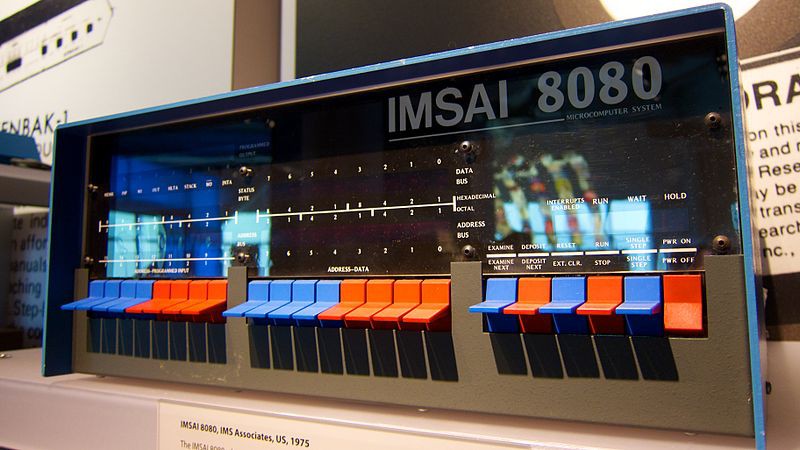From https://twobithistory.org/2018/07/22/dawn-of-the-microcomputer.html:
"
Popular Electronics had in fact been running a series written by Roberts for several issues before January 1975. The series was billed as a short course in “digital logic.” In the December 1974 issue, Roberts walked readers through building a “very low cost computer terminal,” which was basically an octal keypad that could input values into an 8-bit computer. In the course of describing the keypad, Roberts explained how transistor-to-transistor logic works and also how to construct a flip-flop, a kind of circuit capable of “remembering” digital values. The keypad, Roberts promised, could be used with the Altair computer, to be announced the following month.
It’s unclear how many Popular Electronics readers actually built the keypad, but it would have been a very useful thing to have. Without a keypad or some other input mechanism, the only way to input values into the Altair was through the switches on the front panel. The front panel had a row of 16 switches that could be used to set an address and a lower row of eight switches that could be used to control the operation of the computer. The eight right-most switches in the row of 16 could also be used to specify a value to be stored in memory. This made sense because the Intel 8080 used 16-bit values to address 8-bit words. The 16 switches on the front panel each represented a bit—the up position represented a one, while the down position represented a zero. Interacting with a computer this way is a revelation (more on that in a minute), because the Altair’s front panel is a true binary interface. It’s as close as you can get to the bare metal.
As alien as the Altair’s interface is to us today, it was not unusual for its time. The PDP-8, for example, had a similar binary input mechanism on its front panel, though the PDP-8’s switches were nicer and colored in that attractive orange and yellow color scheme that really ought to make a comeback. The PDP-8, however, was often paired with a paper-tape reader or a teletype machine, which made program entry much easier. These I/O devices were expensive, meaning that most Altair users in the early days were stuck with the front panel. As you might imagine, entering long programs via the switches was a chore. Eventually the Altair could be hooked up to a cassette recorder and programs could be loaded that way.
"

Though clicking on switches does not offer the same tactile satisfaction as flipping real switches, playing with the Altair simulation is a great way to appreciate how a binary human/computer interface was both horribly inefficient and, at least in my opinion, charmingly straightforward.

No wonder I focus on the UI and not just the processor...
 Yann Guidon / YGDES
Yann Guidon / YGDES
Discussions
Become a Hackaday.io Member
Create an account to leave a comment. Already have an account? Log In.
That IMSAI photo brings back fond memories as that was the first computer experience I had and later one was given to me after a friend passed away...
Are you sure? yes | no
awwwww
Are you sure? yes | no
Sadly I no longer have it but I still remember the address to execute its programs as E900 :-)
Are you sure? yes | no